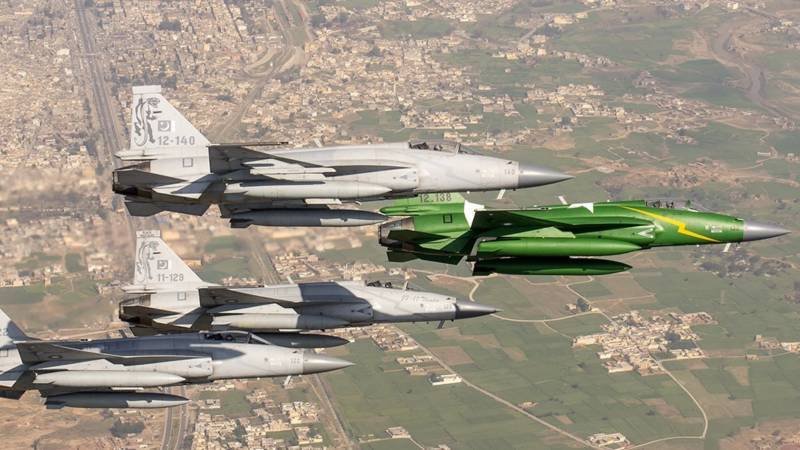Airpower Reimagined: Lessons From Modern Conflicts And Pakistan’s Operation Bunyan Ul Marsoos
Imama Khan
2 July 2025


Modern air warfare has challenged many long-held doctrinal notions about combat airpower. Recent aerial conflicts have demonstrated the indispensability and dynamic nature of next-generation airpower that has moved beyond the traditional goal of “control of the air” to the seamless fusion of a range of capabilities. In this current age of vulnerability, the creation and sustenance of air dominance can lead to escalation and an expanding spectrum of conflict. Key takeaways can be drawn from recent conflicts in the Middle East, Ukraine, and especially from Pakistan’s Operation Bunyan ul Marsoos, carried out in response to Indian aggression, highlighting the value and utility of integrated and adaptive aerial operations in contested environments.
Survivability in modern aerial warfare cannot rely solely on the zenith of technology and innovation; rather, it is adaptability and resilience that yield the desired degree of control over the air. In March 2025, Israel mounted external weaponry on its F-35(I) Adir aircraft, thereby compromising stealth in exchange for enhanced weapon-carrying capability to engage a larger number of targets within the same mission. Such tactical adaptation was feasible in uncontested airspace, where additional weapons offered greater dividends than the risk of enhanced detectability.
The doctrinal elevation of drones is yet another takeaway from recent conflicts, especially in Ukraine, indicating a shift from the primacy of conventional employment of airpower to the operational flexibility that Unmanned Aerial Systems (UASs) provide—particularly in asymmetrical warfare. Not long ago, UASs were considered peripheral, but they have now become central to airpower doctrine. This is evident in the use of drones by Hamas to breach Israel’s “Iron Dome” and by Russia to overwhelm Ukrainian air defences. Drones have exploited the technical gaps in traditional force structures, thereby securing primacy in the evolving air doctrine.
Electronic and Cyber Warfare (EW) has also emerged as a core enabling element for the effective employment of airpower in high-tech contested airspace. Russia’s disruption of Ukraine’s command, control, communications, computers, intelligence, surveillance, and reconnaissance (C4ISR) capabilities has reinforced the indispensability of continuous innovation and counter-innovation in EW capabilities. Tactical adaptation against an EW threat is a rising trend in modern warfare, compelling contemporary air forces to reassess their operational concepts and doctrines. This involves enhancing interoperability and undertaking Multi-Domain Operations (MDOs) that employ sophisticated techniques for seamless sensor-shooter fusion, satellite integration, and real-time decision-making—thus transforming airpower from a “supporting” to a “supported” role. The redundancy of Ukrainian command and control nodes, and their rapid adaptation to counter Russian EW, has validated the centrality of exploiting the electromagnetic spectrum for one’s advantage while denying it to the adversary.
Pakistan’s Operation Bunyan ul Marsoos offers a case study for defence analysts to understand how the skilful application of airpower—with intelligent and seamless sensor-shooter fusion, EW, and satellite integration—can create strategic effects in a short span of time. While India over-leveraged airstrikes to satisfy domestic political exigencies, the Pakistan Air Force (PAF), under the able leadership of Chief of Air Staff Zaheer Ahmad Baber Sidhu, employed airpower to achieve clear operational and strategic objectives. PAF’s well-calibrated use of EW and cyber warfare against Indian early-warning systems, communication networks, energy grids, and other vital nodes not only shaped the battlespace in PAF’s favour but also amplified the impact of its kinetic applications. Pakistan’s precise EW and cyber strategy reflected a major shift in understanding modern electronic and cyberspace warfare, and its seamless integration into the broader scheme of MDOs.
Remaining within the ambit of conventional force application and without risking escalation, PAF successfully destroyed and neutralised several high-value Indian military targets. It etched a decisive air dominance in the fiercely contested skies of South Asia by downing seven Indian fighter aircraft, including three high-tech Rafales and a multimillion-dollar Heron drone—thus demonstrating the lethality and superiority of PAF’s evolving air doctrine.
Combat airpower must evolve strategically, not just operationally. It must reassure without overcommitting, deter without provoking, and possess the capacity to escalate without overreaching. Airstrikes that fail to achieve strategic outcomes—such as deterrence, political influence, or psychological superiority—amount to little more than expensive shows of force. Victory in the sky must translate into results on the ground. Tactical brilliance means little if it does not serve a coherent strategy designed to create the operational and strategic effects necessary for success.
The wings of the future will not belong to those with the best kinetic capacity, but to those who think smarter, adapt faster, and achieve true multi-domain convergence. Recent conflicts are not just reflections of past doctrine—they are prologues. And those who fail to learn from them risk being dangerously unprepared for the wars of the future.


The Centre for Aerospace & Security Studies (CASS) was established in July 2021 to inform policymakers and the public about issues related to aerospace and security from an independent, non-partisan and future-centric analytical lens.

@2025 – All Right Reserved with CASS Lahore.